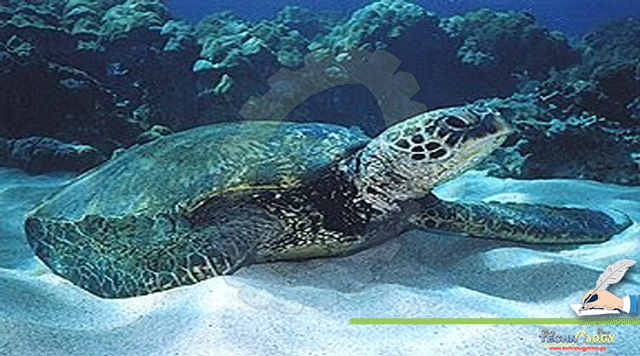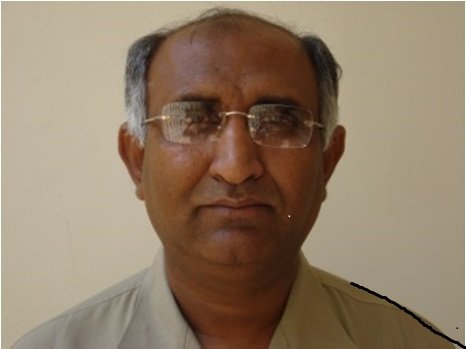At the time of creation in 1947, Pakistan was known as a hunter’s paradise. You make a will, for a particular animal, you had it through hunting. But then due to indiscriminate hunting scenario changed and in the last 72 years, many species have gone extinct and quite a big number is in the Red List of IUCN, hence endangered.

By Abdullah G Arijo PhD
Out of 1.5 million precious species existing on earth, “Green Turtle” is one of the endangered species and is an attraction for environmentalists for its conservation.
Covered with wildlife caps, Bilawal and Bakhtawar Bhutto with buckets are moving on the Karachi coast with multiple messages, “Save Green Turtle Save Nature” a slogan that is in the air for at least since last 30 years when I visited Karachi beach on a university trip for the marine collection. I then had little ideas as to why a reptile is so important to be saved.

Later, I realized that every creature on planet earth plays a role as an individual or as a population what we now call ecological niche, hence the conservation of species is extremely important. By conserving wildlife, we are ensuring that future generations can enjoy our natural world and the incredible species that live within it. To help protect wildlife, it is important to understand how species interact within their ecosystems, and how they’re affected by environmental and human influences.
On this topic, Alix Collins views are worth reading when she concludes that Plants and animals maintain the health of an ecosystem. And, when species become endangered, it is a sign that an ecosystem is out of balance. A well-balanced ecosystem maintains the health of the environment. This ensures that human beings have access to clean air and water, and fertile land for agriculture. Collins further suggests that Clean air and water improves our quality of life, and fertile land for agriculture ensures that we can produce enough food for consumption. A balanced ecosystem also provides us with plants that have medicinal properties.
The Green Turtle is the largest of the hard-shelled sea turtles. Average nesting female carapace length 80 to 110cm and weighs 110 to 185kg. The Green Turtle eats exclusively seaweed (marine algae). Migrating Green Turtles may travel 20 to 40km per day. Females do not attain maturity in the wild for 15 to 50 years. After a period of two to five decades, females typically migrate to a nesting beach often used by aggregations of turtles. Females remigrate at intervals of three years and may lay three clutches of 100 to 120 eggs. Hatchlings emerge mostly at night from eggs buried in beach sand and make their way to the sea.
The green turtle is an endangered creature. Six of the seven species of sea turtles are listed as endangered, or critically endangered according to the International Union for Conservation of Nature’s (IUCN).
The main threats to green turtle are loss of habitat, marine water pollution, and largely bycatches. The uncontrolled housing on the beach has led directly to the destruction of critically important nesting beaches and feeding habitats. Moreover, the coastal dogs remain all the time around to dig the nest and recover eggs and eat them away.
WWF has reported that, in Pakistan, the only two main nesting sites for these turtles are Sonmiani in Balochistan and at Sandspit. The WWF has its observation and awareness projects at both these places, while the Sindh Wildlife Department has been operating a green turtle conservation project for the last 20 years at Sandspit.
Reportedly, Karachi is one of only 11 places in the world where green turtles make their nests from September to mid-December. The Sindh wildlife department has been keeping a record of all turtles nesting at beaches, tagging them, shifting the eggs to safe places and releasing the hatchlings into the sea.
All over the world, Pakistan not an exception, there has been a great reduction in population due to multiple factors, including over-developed coastal areas which reduce their natural nesting habitats and the capture of adult turtles for eggs, meat, leather, and tortoise shells, decreasing the breeding populations.
It reminds me of the days (1996) when I use to visit the coastal area and luckily met a female professor of Marine biology doing a project. She took my attention when she told me that she has hired Baloch Man to work at night and guard the turtle nests saving them from dogs. Surprisingly, it was the day when turtles were expected to hatch out and march to the seawater. To the professor, it was like an emergency. All Baloch workers were on red alert, and finally, the moment came when quite a few juvenile turtles emerged out of sandy soil and started running to the seawater. I saw an excellent moment of nature while not a single turtle was moving against water. It was a few hours of nature work.
These days Mrs Fehmida Firdous, in-charge SWD, has been attached with the project (really do not know if it is the same project) since its initiation. According to her, if undisturbed, the females leave the water and crawl up the beach to a point well above the high tide line. There, using her rear flippers, the female digs an egg chamber cavity about 8 inches in diameter and about 18 inches deep.
After resting briefly, she lays about 100 eggs (sometimes more) measuring about 2 inches in diameter. She then gently covers the eggs with sand and spreads sand over a wide area with her front flippers to obscure the exact location of the chamber. The female then leaves the nest site and reenters the water. It is worth noting that male sea turtles never leave the ocean, and their carcass or full body is washed ashore after their death.
The good news is that a turtle conservation laboratory of the SWD is under construction at Sandspit, the WWF has an office opposite the beach, called the ‘Wetland Centre’ the focal point of all its turtle and bird watching tours and awareness programs.
The Sindh Wildlife Department deserves appreciation for working hard to protect sea turtles, as they form an important part of the marine ecosystem. Other environment-related department or agencies must also come forward and contribute to saving this precious species.

Author: Abdullah G Arijo PhD